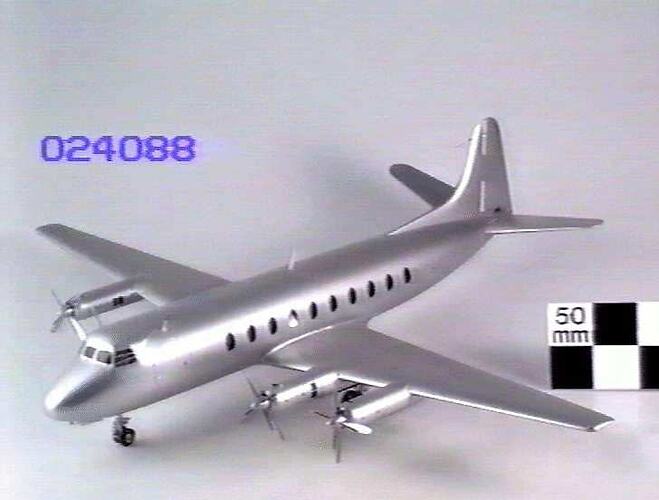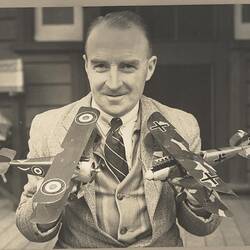Summary
Aircraft History
Design work on this four-engine turboprop airliner began during World War II under the Brabazon Committee which planned Britain's post-war passenger aircraft requirements. Vickers-Armstrongs Ltd began work on the prototype in 1945-46 and this machine first flew in July 1948. The initial preferred name of Viceroy was changed to Viscount. Development of the up-rated Rolls-Royce Dart engine caused delays to the project and the first delivery of the 40-passenger Type 701 did not take place until 1953. Production ended in 1964 after 444 Type 700 and Type 800 Viscounts had been built.
The Viscount provided Australian airline operators with their first truly modern turboprop passenger aircraft but its operating record in Australia was far from good and its range and payload was limited. Trans Australian Airlines ordered six of the Type 700 in 1952 and eventually operated 17. Viscounts were also operated by Ansett-ANA, Butler Air Transport and MacRobertson Miller Airlines (MMA). The RAAF operated two 800 Series Viscounts in the VIP transport role. Both MMA and Ansett suffered major crashes involving the Viscount. Ansett-ANA Viscount 720 VH-TVC (leased from TAA) crashed in Botany Bay in November 1961 during extreme weather. Viscount VH-RMI was lost at Winton, Qld in September 1966 due to an in-flight fire and MMA Viscount VH-RMQ lost a wing in flight and crashed during a Perth to Port Hedland service on 31 December 1968. The Viscount was withdrawn from Australian airline service soon after the Port Hedland accident. Some of the Viscounts however gave good service and VH-TVE was the first turbine-engined aircraft to record 20,000 flying hours.
Model History
This 1:32 scale model of an unmarked Type 700 Viscount was made by Mr Harold P. Wood for the Museum in 1956.
More Information
-
Collection Names
-
Collecting Areas
-
Acquisition Information
Purchase
-
Modelmaker
Mr Harold P. Wood, Glen Iris, Greater Melbourne, Victoria, Australia, 1956
-
Manufacturer of Item Modelled
-
Brand Names
-
Classification
Air transport, Aircraft, Model propeller aircraft - passenger
-
Category
-
Discipline
-
Type of item
-
Overall Dimensions
900 mm (Width), 770 mm (Depth), 260 mm (Height)
Measurements of model only. 'Width' is model wingspan, 'Depth' is model length from nose to tail, 'Height' is overall model height while resting on its undercarriage.
-
Model Scale
1:32
-
Keywords

